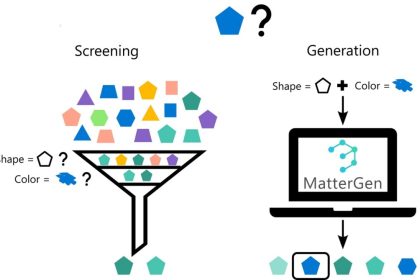After participating in the famous ChatGPT workshop held by Jordi, an important question was raised, which has now become the main topic of this article:
Will natural language processing interfaces (such as ChatGPT) replace graphical interfaces?
In the past few years, chatbots have been proving their presence continuously and sometimes intermittently, and their small arena has suddenly turned into a big bomb. However, the chatbots created at that time were not powerful enough to be recognized as a symbol of a revolution; Therefore, some of them accepted defeat and other examples continued to work in silence.
In those years, technology was moving along its way and the user experience was far from the word “enjoyable”. But now several months have passed since 2023 and communicating with ChatGPT feels natural and scary to the user.
Natural interaction
In the book “The Design of Future Things”, Donald Norman has discussed various aspects of design and human interaction with technology. While the main focus of this book is on designing future technologies, Norman also takes a look at the concept of natural interaction.
In his book, Norman emphasizes the importance of designing technology that is compatible with human ability and behavior. He acknowledges that technology should be designed to support natural interaction. In addition, users should easily cope with how to interact with the user interface and control smart devices without any complexity or training.
Norman also criticized the idea that users should adapt to graphical interfaces and suggested that developers and technologists should create a product that adapts to users. One of Norman’s requests and the subject that has been paid attention to in this book is the need to design a perceptual interface that requires natural human skills and abilities to interact with it; This topic includes the design of a device and a system that can communicate with a person through understanding, memory, and cognition and free the user from complex and diverse graphical interfaces.
But now think about natural language processing. Thanks to this technology, there is no more ad hoc language and new semiotics, and this means achieving natural interaction progress.
All that glitters is not gold

Although natural language processing has experienced significant advances in the past few years, we still face various challenges that remain unanswered.
- Understanding texts and common sense: Natural language processing models have always struggled to understand the texts and common sense used to accurately interpret language. Models such as: ChatGPT 3, although it can give users’ answers in a reasonable way, but their wrong and meaningless answers are also obvious to everyone due to the limitation in understanding the vast texts of conversations and knowledge of the world.
- Dealing with ambiguity and resolving it: Language is inherently ambiguous, and natural language processing models may not deal well with disambiguation. Solving ambiguous references, word meanings or interpreting and accurately and consistently translating phrases and idioms is a challenging task for natural language processing systems.
- Dealing with rare words and items that are not in the language model dataset: Linguistic models learn from a large set of data, but sometimes we may encounter rare words and items that are not available to linguistic models; Therefore, dealing with words beyond the reach of the linguistic model and updating it is still considered as a challenge.
- Observing bias and ethical issues: Natural language processing models are condemned to unintentionally provide false information. These models may provide answers about gender, ethnic, and cultural biases that many users may not like. This situation is similar for ethical cases, and although many governments and users are not satisfied with its treatment, it remains an unsolved challenge.
How to delete a ChatGPT account with a few simple methods
- The basis of language in the physics of the world: Understanding the language in relation to the physics of the world was and is a challenge. While progress has been made in areas such as image description or answering visual questions, fully integrating visual information or sensor data with language understanding remains a challenge.
- Understanding texts when the user’s conversation with the natural language model increases too much: Most of the time, natural language processing models can’t perform properly while augmenting the conversation with the user. Although it is intended for them to maintain a reasonable conversation and understand the topics, they can hardly and sometimes cannot maintain the quality of the conversation; A problem that some people also struggle with.
- Reasoning and providing explanations: While natural language models can provide somewhat reasonable answers to the user, they do not benefit from the ability to reason logically and clearly, and they remain silent when explaining their decisions.
Graphical interfaces and features
Ideally, the desired design should provide visual and clear features and provide this possibility for the user to easily learn and predict how to use and interact with the system and components.
Feedback helps users to be aware of the results of their actions and provides information about the state of the system. Functional feedback helps the user to interact with the interface design and not get confused.
When graphical user interfaces are designed correctly, they will have the ability to interact with users in a way that users understand their abilities and capabilities and predict system behavior. In general, natural language interfaces struggle to provide these evaluations and, like humans, you don’t know what to expect.
Conclusion

Given the current limitations of the technology, it is unlikely that GUIs will be completely replaced by chat-based interfaces in all situations. Different types of interfaces also serve different purposes and each has its own advantages and disadvantages. Graphical interfaces are useful for providing visual effects, combining complex data, and tasks that require precise input and control. This interface is suitable for tasks such as: graphic design, video editing or working with large sets of data.
On the other hand, chat-based interfaces are desirable for tasks that boil down to natural language interaction, personalized suggestions, and information retrieval. They can be used especially in customer support, personal assistant and interactive storytelling.
In many cases, a combination of these two interfaces may be used to implement a comprehensive user interface. For example, a chat-based interface can handle high-level commands and queries, while a graphical interface can be used for finer-grained control.
In conclusion, although chat-based interfaces have the potential to significantly impact interactions with digital systems, they will not replace graphical interfaces. The coexistence and integration of different interface models will most likely shape the future of user interaction.
How to use ChatGPT application on iPhone?
RCO NEWS


















